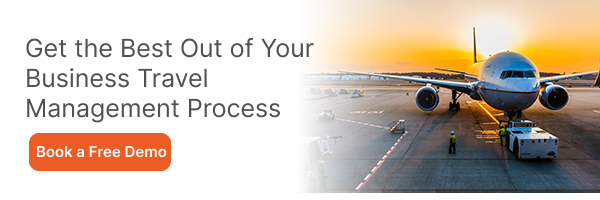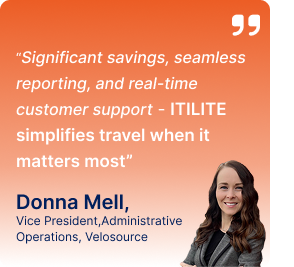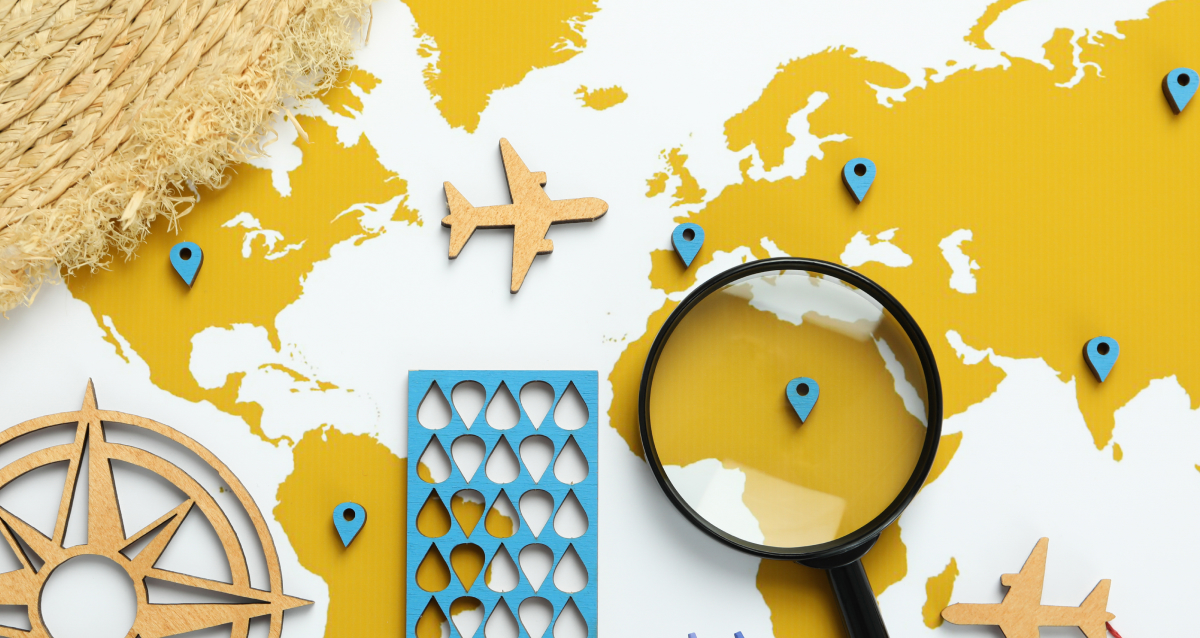
As a travel manager, you are likely experiencing heightened pressure to budget and manage corporate travel more efficiently than ever. A global survey of 700 travel managers across seven markets reveals that nearly half (47%) feel their role has become more stressful since 2022. The primary challenge cited by 41% of respondents is the rising cost of business travel booking, driven by inflation.
With all these responsibilities, increasing your productivity is essential. One way to reduce your workload significantly is to streamline the company travel booking process.
Thankfully, technology offers a solution. A business travel booking tool simplifies the process, putting cost-efficient options at your fingertips. This tool simplifies bookings, tracks expenses, and ensures policy compliance. It allows you to free up your time for other intensive tasks.
You can do a few other things to make booking business travel easier. Let’s look at a few of them.
What is Business Travel Booking Software?
Corporate travel booking software helps companies manage the entire process of business travel. It can be used to book trips, manage upcoming trips, and track and report on previous trips. This software can also help with tasks such as:
- Expense tracking: Eliminates manual tasks and can help manage unexpected travel challenges like flight cancellations
- Itinerary creation: Can help arrange flights and itineraries
- Tracking travelers: Can help keep track of travelers while they are on the move
- Compliance: Can incorporate a company’s policies
- Reporting and Analytics: Help track travel budgets and identify areas for cost savings.
- Integration with Other Systems: Seamlessly integrates with other systems such as ERP and HR for streamlined operations.
7 Strategies to Simplify Your Business Travel Bookings
Here is a list of 7 strategies to simplify travel bookings :
1. Set a Procedure for Business Travel
Most companies lack a standard trip booking system, resulting in inconsistent email or in-person requests. This disorganized approach makes it difficult for travel managers to track and manage bookings efficiently. Employees often provide incomplete details, requiring travel managers to follow up repeatedly, wasting valuable time.
Implement a standardized travel booking procedure to streamline the process. Create a comprehensive business travel request form for all employees to complete. This form should capture all necessary details, ensuring a consistent and efficient booking process.
Some other procedures and rules to implement in business trip booking are:
Approval Process of Business Travel Booking
- Define who needs to approve travel requests.
- Set up an automated approval workflow to speed up the process.
Preferred Vendors and Booking Platforms
- The list approved airlines, hotels, and car rental companies.
- Mandate specific booking platforms (e.g., itilite) for all travel arrangements.
Expense Guidelines
- Set maximum allowable expenses for flights, hotels, meals, and other travel-related costs.
- Establish guidelines for submitting travel expenses and reimbursements.
However, a better solution to implement these procedures is to automate the process with corporate travel management software. This software allows company travel booking requests to be raised, reviewed, and approved or rejected instantly. It also retrieves employee details and provides options based on past travel preferences, saving time for both travel managers and employees.
2. Book Flights and Hotels Early
Booking flights and hotels early is crucial for securing the best deals and ensuring everything aligns with employees’ preferences. Flights often get booked well in advance, and their rates fluctuate frequently. Similarly, good hotels sell out quickly. Early business travel bookings help you lock in preferred options and amenities for a better travel experience.
Tips for Advanced Bookings :
Stay Vigilant on Airline and Hotel Websites
- Regularly monitor airline and hotel websites to catch the best deals as soon as they become available.
- Subscribe to newsletters and follow airlines and hotels on social media for exclusive offers and updates.
Set Price Alerts
- Use price alert services to get notifications when flight and hotel prices drop.
- Customize alerts based on your budget and preferred travel dates to maximize savings.
Negotiate with Flight Suppliers
- Leverage Volume: Use your company’s frequent travel volume to negotiate discounts.
- Request Corporate Rates: Many airlines offer special rates for regular business travelers.
- Seek Added Perks: Negotiate for flexible company travel booking options and extra baggage allowances.
The platform’s advanced configurations help optimize bookings and ensure policy compliance, leading to significant savings—up to 30% on overall travel costs.
To save more on travel costs, try itilite for free now.
Suggested Read:
Benefits of Having Company Travel Software
3. Create an Inventory of Preferred Hotels
Maintaining an inventory of preferred hotels is a key strategy for travel managers to streamline business travel booking processes and enhance the travel experience. Here’s how to effectively create and manage this inventory:
Identify Criteria
- Define the criteria for selecting preferred hotels: location, amenities, cost, and quality.
- Consider factors like proximity to key business locations, accessibility, and hotel ratings.
Gather Recommendations
- Collect feedback from frequent travelers to identify hotels that meet their needs and preferences.
- Use reviews and ratings from reliable sources to assess hotel quality.
Establish Partnerships
- Build relationships with hotel chains and independent hotels to negotiate corporate rates and special offers.
- Secure agreements for consistent pricing and preferred company travel booking terms.
Update Regularly
- Regularly review and update the list to include new hotels and remove those that no longer meet criteria or provide satisfactory service.
- Stay informed about changes in hotel services, rates, and availability.
Centralize Information
- Maintain a centralized database or list of preferred hotels accessible to all employees.
- Include detailed information such as contact details, booking procedures, and special rates.
Monitor Performance
- Track feedback and performance of hotels on the list to ensure they continue to meet company standards.
- Address any issues or concerns promptly to maintain quality and satisfaction.
Alternatively, you can use itilite, which offers an extensive inventory through both GDS (Global Distribution Systems) and NDC (New Distribution Capability). This broad range ensures access to diverse hotel options on a single interface.
The company ensures competitive rates and up-to-date availability. This simplifies the business travel booking process and enhances travel management efficiency.
Get Free Traveller Safety Checklist:
4. Create Internal Checklists
Booking a business trip requires a lot of planning. You must determine which flights and hotels to book and plan an advance booking. You must also create corporate travel itineraries to make additional bookings and accommodate special requests. Lastly, you need to ensure that business travelers take all the necessary safety precautions and are up-to-date on their vaccination status, emergency contact details, etc.
Travel Request Checklist :
- Employee Information: Collect details such as name, department, and contact information.
- Trip Details: Include the purpose of travel, destination, dates, and any special requirements.
- Approval Requirements: Specify who needs to approve the request and ensure all necessary approvals are obtained.
- Budget and Cost: Outline estimated expenses and ensure they align with the budget and travel policies.
Checklist
- Vendor Selection: Ensure booking is made through approved vendors or platforms.
- Travel Policies: Verify that business travel bookings comply with company travel policies and guidelines.
- Confirmation: Check that all travel arrangements (flights, hotels, car rentals) are confirmed and documented.
- Travel Documents: Ensure necessary travel documents (e.g., visas, insurance) are obtained and valid.
Pre-Travel Checklist
- Itinerary Review: Confirm all business travel booking details, including flight times, hotel reservations, and transportation arrangements.
- Packing List: Provide a list of items to pack based on the trip’s duration and purpose (e.g., business attire, equipment).
- Health and Safety: Check any health requirements or travel advisories related to the destination.
Post-Travel Checklist
- Expense Reporting: Ensure all travel expenses are submitted and categorized according to company policies.
- Feedback Collection: Gather feedback from employees about their travel experience to identify areas for improvement.
- Debriefing: Review any issues or concerns that arose during the trip and address them for future travel.
Compliance Checklist
- Policy Adherence: Verify that all travel bookings and expenses comply with company travel policies.
- Documentation: Ensure all required documents and approvals are completed and archived.
- Audit Trail: Maintain records of all approvals, bookings, and expense claims for auditing purposes.
5. Use Virtual Reality
Incorporating Virtual Reality (VR) into business travel management can transform the booking process by offering immersive previews of hotels and destinations.
VR allows travel managers and employees to virtually explore hotel rooms, meeting spaces, and local attractions before making a booking. This technology helps in assessing the suitability of accommodations, verifying amenities, and ensuring that the chosen location meets specific requirements.
By providing a realistic view of the travel environment, VR reduces uncertainties and enhances decision-making. This leads to better alignment with employee preferences, improved satisfaction, and a more efficient booking process overall.
6. Apply for APEC Corporate Travel Cards
Applying for APEC (Asia-Pacific Economic Cooperation) Corporate Travel Cards offers significant advantages for businesses operating in the APEC region. These cards are designed to streamline travel processes and provide exclusive benefits for frequent business travelers.
They facilitate expedited immigration and customs processing at participating airports, which can save valuable time and reduce travel-related stress. Additionally, APEC Corporate Travel Cards often include access to airport lounges, priority boarding, and other premium services.
By using these cards, companies can enhance travel efficiency, improve employee satisfaction, and potentially reduce travel costs through various perks and streamlined procedures. To complete the application, the traveler must have a valid passport from a qualifying country, have no criminal record, and regularly travel for business.
7. Gather Feedback After the Trip
To continuously improve the business travel booking experience, it’s essential to collect feedback from employees after each business trip. This input helps refine future business trip bookings and enhances overall satisfaction. Some questions to ask include:
- Airline Experience: How was the quality of food and service on the airline?
- Hotel Ambiance: How would you rate the hotel’s ambiance and comfort?
- Concierge Service: How effective was the concierge service in meeting your needs?
- Location Proximity: Was the hotel conveniently located relative to your meetings or events?
- Support Availability: Was support easily accessible if you encountered any issues?
- Service Quality: How satisfied were you with the hotel’s overall service quality?
- Booking Process: What improvements would you suggest for the business travel booking process?
- Transportation: Was the transportation between the hotel and your business locations satisfactory?
- Amenities: Were the hotel amenities up to your expectations?
Gathering this feedback will help identify areas for improvement, ensuring a smoother and more enjoyable experience for future trips.
Suggested Read:
How to Cut Business Travel Costs
Simplify Business Travel Bookings with itilite
Implementing these strategies can enhance the management of travel arrangements and improve overall satisfaction. However, consider leveraging integrated travel and expense management software like itilite for optimal results.
The itilite platform offers end-to-end automation and digitization of the travel management process. With itilite, the booking turnaround time is significantly reduced to 90 seconds, allowing for quicker and more efficient arrangements.
Get a free demo of itilite to experience lightning-quick and effortless travel booking along with other advanced features.













